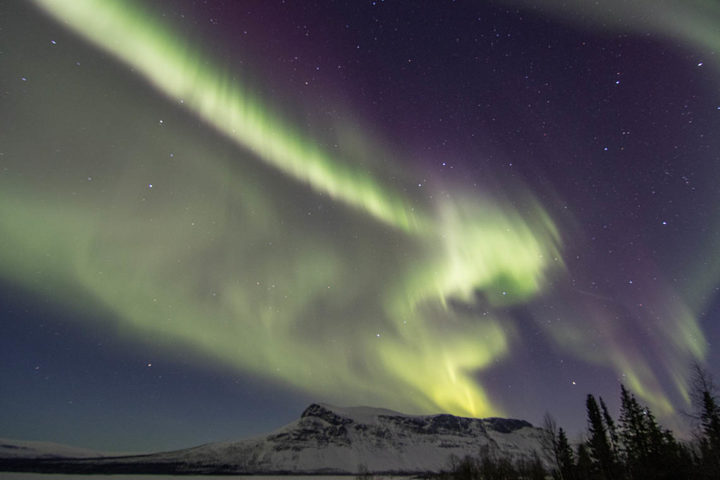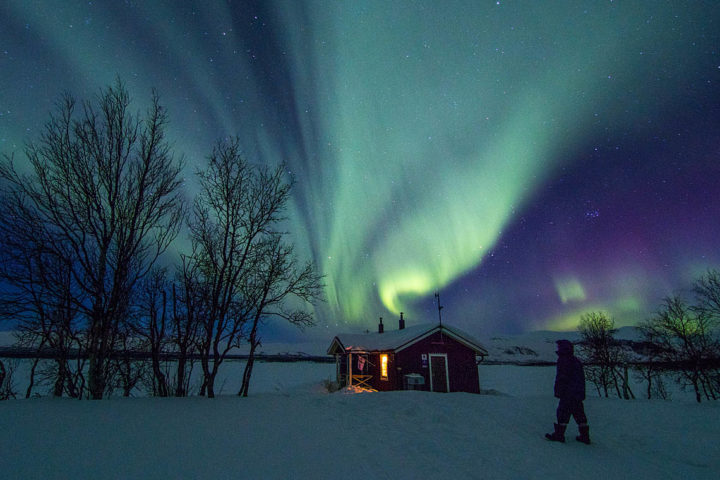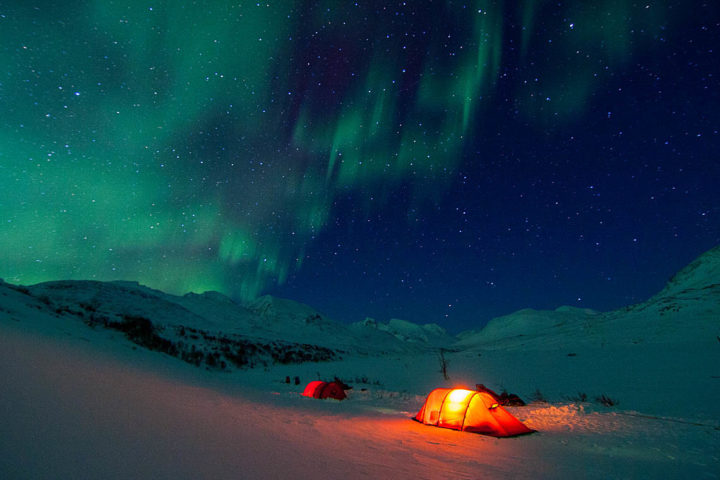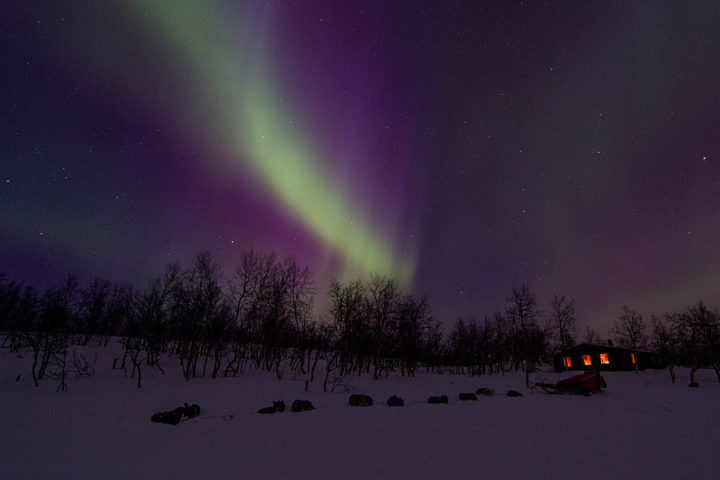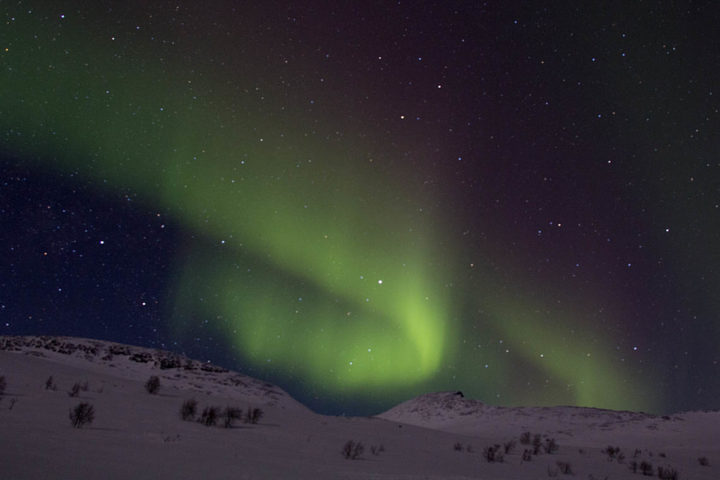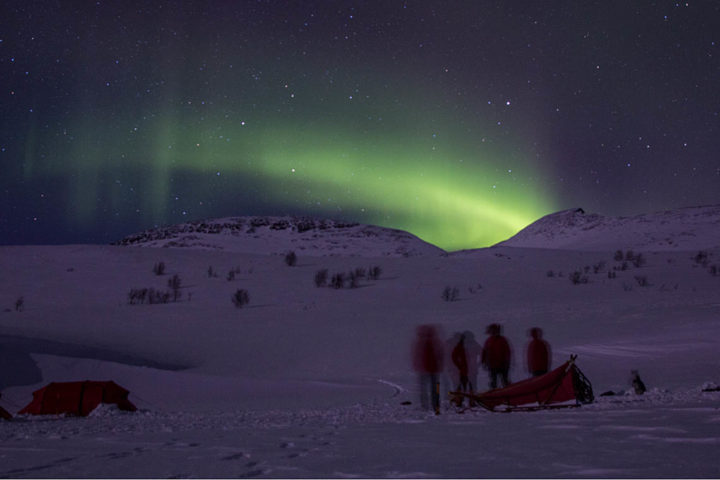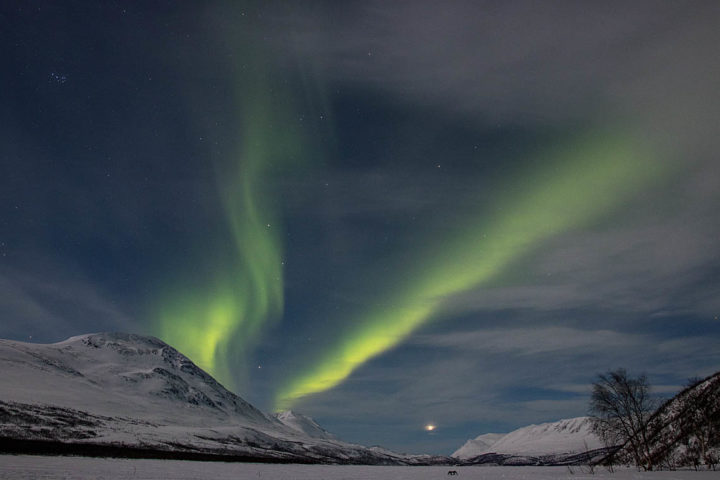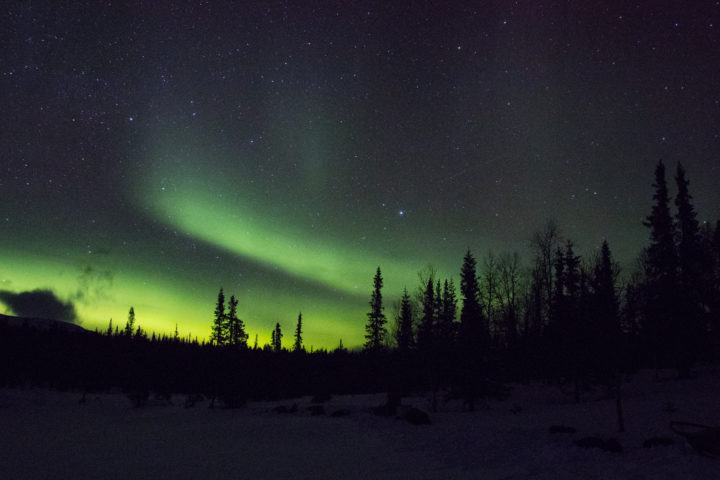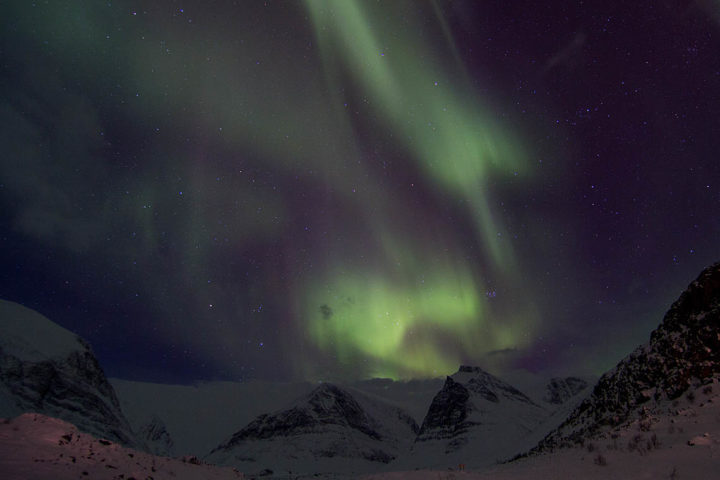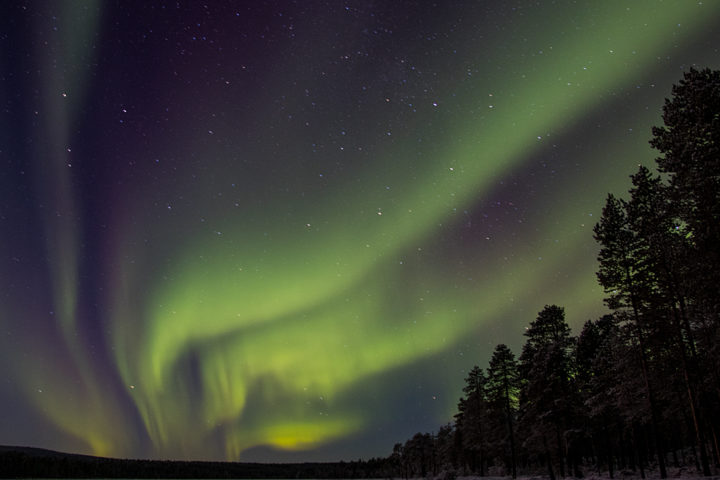Northern lights, Aurora Borealis is a nature and light phenomena that you can see dancing over the sky on the northern regions of the hemisphere. It flickers and plays over the clear sky in the nights.
The northern lights are usually green but can also be red, violet, blue-white or slightly yellowish.
This sky phenomena have always existed in the mythology of the people who lived up here in Lapland and other northern regions. A similar light can also be seen on the southern hemisphere where it is called southern lights or Aurora Australis.
The common name for northern and southern lights is polar lights.
If you like to know the possibilities for northern lights you can check out the Aurora Borealis forecast.
What are the Northern lights?
To simplify it you can say that the northern lights are an interplay between the sun energies, the earth’s magnetic fields and atmosphere.
The sun throws out charged particles that transports through space towards earth in a solar wind. Some of the particles draws down towards the earth’s magnetosphere with a very high speed, 300-1000 km/second. The light phenomena appear when the particles collide with the atoms and molecules in our atmosphere. If the collision is powerful enough some of the particles motive energy transforms into the light phenomena northern lights.
The activity on the sun occurs with a cycle of about eleven years i.e. a peak every 11th year. In addition, there is a 27-day cycle, which also controls the auroral activity.
Sounds from the Northern lights
The only possible sound frequency on so far distance as where the northern lights takes place is maximum 2000Hz because of the very low molecule density. Sounds with so low frequencies reduces very fast in the atmosphere. The amount of energy (sound) that reaches the earth will hardly likely be enough for the human ear to catch.
The time it would take for the sound, with a velocity of 330 m/sec to wander from the height of 100 km down to the earth’s ground is about 3 minutes (400 km, 12 minutes). It is therefore not likely that you could hear the northern lights “wander” across the sky.
There are also other theories of how electric fields could cause spark discharges on the earth, or even directly affect our nerve system.
The northern lights, however generates an infrasound, which can be measured with equipment but inaudible to human ears.
The interesting thing about this is that many people in almost the entire auroral zone say they have heard auroral sounds. It has not been able to record any of them but there are similarities in the people’s stories. They have all been under a strong aurora borealis during a clear calm night. The Northern lights sound seems to appear in two different ways. One is a kind of sparkling sound like sparks from a fire and the other is more like a kind of whining sound.
The northern lights appearance
You often get amazed of all different shapes, speeds and colour shades as the northern lights appear in. Sometimes they are weak and just below the horizon and sometimes strong and dancing all over the sky. The Northern lights can take many different forms. It can appear as a colourful belt across the sky, in auroral arcs, cloud-like surfaces, rays, drapes, coronary and flaming aurora. Several of these may then appear in different variants as homogeneous, vibrant, radiant etc.
The northern lights can spread in 1600 km in east-west direction but usually not more than 1,5-2 km in the north-south direction.
The northern lights occur at altitudes between 90-1000 km, but the more common altitude is between 100-400 km.
What colour the northern lights appear in depends on if the solar wind-charged particles collide with oxygen or nitrogen atoms in our atmosphere.
It is not unusual that time and again you get standing beneath a stunning aurora borealis as if you never ever seen anything like it! So, it’s not hard to understand that people in the past gave the northern lights a place in the mythology.
The northern lights in the mythology
The Latin name Aurora Borealis means Northern dawn and the name began to be used during the 1600s.
In many cultures the aurora was linked with the dead and among other things people thought that it was the resident for the dead. Therefore, it has always come naturally to people to be reverent and to show respect for this northerly light phenomenon.
In Sámi the Aurora is called Guovssahas.
According to the Sámi mythology you should never whistle to the northern lights as it can lead to misfortune. The Inuit in Greenland and the Indians of North America had similar beliefs as the Sámi people. There are many stories from North America and Scandinavia how dangerous it can be to not show respect for the northern lights.
The northern lights is also mentioned in the Bible, in the book of Ezekiel in the Old Testament. In the 2,600 years old description it says:” I looked, and I saw a windstorm coming out of the north–an immense cloud with flashing lightning and surrounded by brilliant light.”
But the oldest images of the aurora borealis is a couple of cave paintings in Rouffinac in France. The paintings consist of lines and arcs drawn with the fingers of stone-age hunters who lived about 10,000 years ago.
One can assume that the aurora had the same meaning for them as it had later on for the Sámi people, the Inuit’s and the Indians all the way until the 1900s.
Where and when to see the Northern Lights?
The most powerful northern lights and southern lights are closest to the magnetic poles.
But thanks to the Gulf Stream is northern Scandinavia perhaps the area in the world where it’s the best climate and best opportunities to see auroras.
The Northern lights / Aurora Borealis occur regardless of weather. However, it is a common myth that the aurora announces colder weather and similar things. To be able to see the northern lights it must be a dark and cloud-free sky. A cloud-free winter sky in Lapland often means that the temperature goes down. That’s why some people even today believes that the northern lights bring the cold.
The best time of the year to see the aurora borealis is September to April.
The best location is to look up an open space without any light pollution (street lights etc.) Usually there is no point to go aurora watching until 1,5 hours after sunset.
Some people claim that the aurora is strongest after midnight until approx. 02:00 while others say it should be strongest between 22:00 – 23:00 (for Scandinavia).
We can only summarize our own experiences and the most important is that you spend time outdoor and actively watching, because we have seen the Northern Lights at any time when the sky has been dark enough.
How to photograph the Northern Lights
There are some simple things you must do to succeed in aurora photography.
Tripod: The exposure times are long and to be able to get sharp images you are totally dependent on a tripod or a stable surface where you can put your camera during the exposure time.
The camera: You must have a camera that can operate without automatic flash and you should be able to set the ISO (light sensitivity) manually. We prefer to work with ISO 200 or 400 to not get to much noise in the picture. It’s also important that the camera have self-timer release or that you have a remote control/switch to prevent camera shake.
Other useful things: Dress warm so you can work more focused and systematically. If you start to freeze you will just take a few quick not so good pictures. Photographing the aurora takes time!
Bring a thermos with hot drinks to keep warm and some cookies or candy for extra motivation.
A headlight is good to have when you change memory card, clean the lens and change batteries. Make sure the batteries are charged and preferably keep them warm close to your body. The cold reduces the power.
The photographing: After setting up the camera, take a test exposure. Check out how it looks in the LCD monitor (digital cameras). But be aware an LDC monitor on a dark night can fool you by making things appear brighter than they are. Always use the histogram and compensate the exposure until you get a good result. You can also try to sweep with your headlight over the foreground.
Patience, several retakes and creativity usually results in some great pictures.
Northern Lights outdoor activities
Dog sledding is a wonderful way to come out to see the Northern Lights.
On all longer dogsledding adventures and expeditions you will have great possibility to watch for Polar lights, for example Dog sledding Adventure and Northern lights.
For those who only want a short adventure we also offer an Overnight Tour with Dog Sled.
Learn more about the Northern Lights
Service Aurora Service Europe: Aurora forecast
Wikipedia, about Northern lights and Polar lights
Tomas Mejtofts thesis on the Northern Lights. Unfortunately only in Swedish.
Worth reading
Arctic Light – The Eyes Of My Heart by Patricia Cowern


